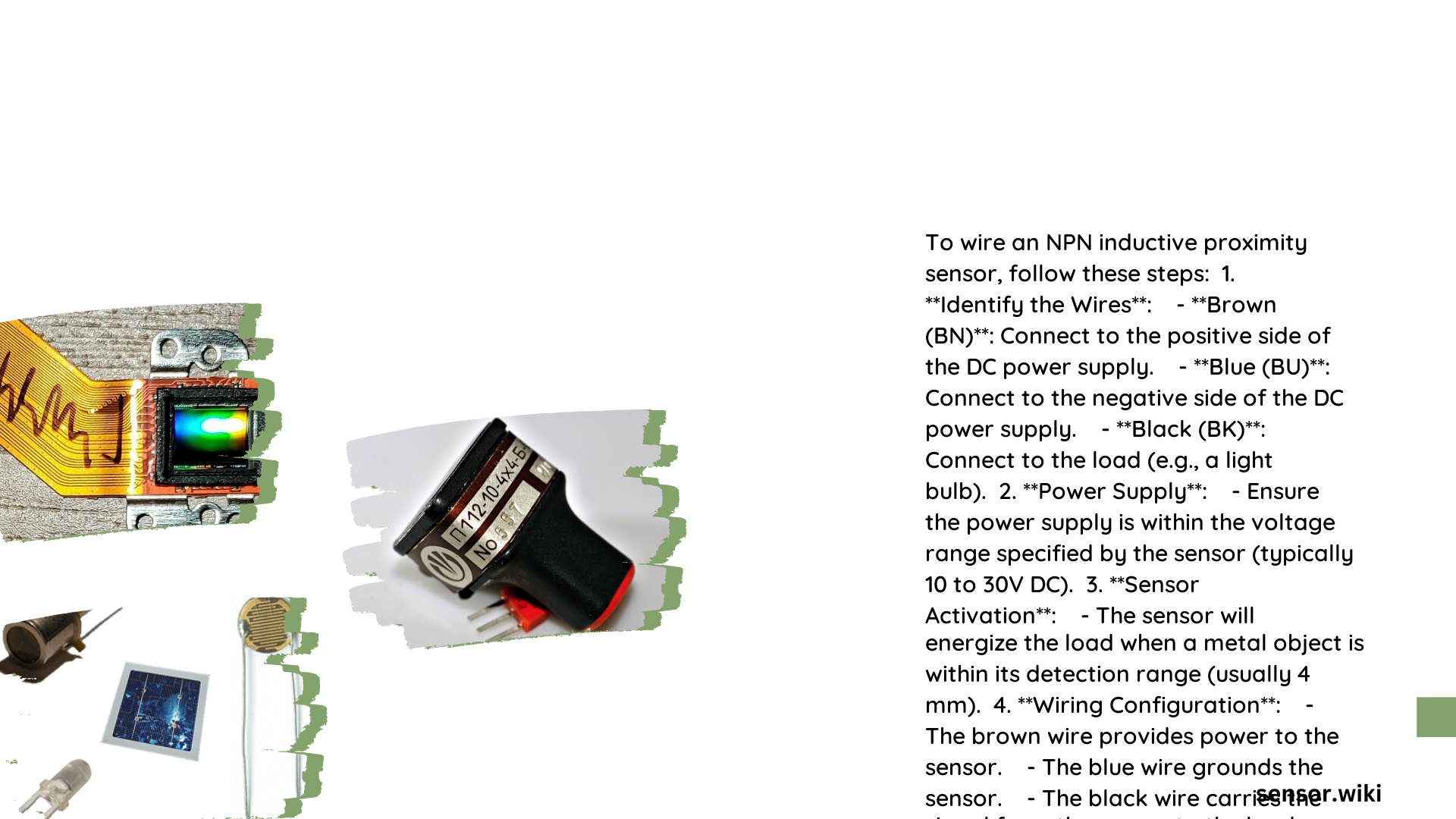NPN inductive proximity sensors are critical components in industrial automation, enabling precise metal detection and object sensing. These sensors provide reliable performance by converting electromagnetic field changes into electrical signals, making them essential for manufacturing, robotics, and process control systems. Understanding their precise wiring configuration is crucial for ensuring optimal sensor functionality and preventing potential system failures.
What Are the Basic Components of NPN Inductive Proximity Sensor?
NPN inductive proximity sensors typically consist of three primary components:
- Sensing Element
- Generates high-frequency electromagnetic field
- Detects metallic objects within sensing range
-
Operates on eddy current principle
-
Electronic Circuitry
- Processes electromagnetic field changes
- Converts detection signals
-
Provides output switching mechanism
-
Connector/Cable Assembly
- Enables power and signal transmission
- Provides robust electrical interface
- Ensures reliable communication
How to Identify Wire Colors and Functions?

Wire Color Coding Standards
| Wire Color | Function | Voltage Connection |
|---|---|---|
| Brown (BN) | Positive Power Supply | +V DC |
| Blue (BU) | Negative/Ground | -V DC |
| Black (BK) | Output Signal | Load Connection |
What Are Recommended Wiring Practices?
Power Supply Connection Guidelines
- Voltage Range: 10-30V DC
- Current Consumption: 10-20 mA typical
- Ensure Stable Power Supply
- Check Reverse Polarity Protection
Output Signal Wiring Steps
- Connect brown wire to positive DC terminal
- Connect blue wire to ground/negative terminal
- Connect black wire to load device
- Verify proper signal routing
- Use appropriate connectors
What Precautions Should Be Taken During Wiring?
Critical Wiring Considerations
- Use shielded cables for noise immunity
- Maintain minimum bending radius for cables
- Avoid mechanical stress on connections
- Implement proper grounding techniques
- Use surge protection devices
How to Troubleshoot Common Wiring Issues?
Diagnostic Checklist
- Verify Voltage Levels
- Confirm power supply matches sensor specifications
- Check voltage stability
-
Measure actual voltage at connection points
-
Inspect Physical Connections
- Examine wire integrity
- Ensure secure terminal connections
-
Look for potential short circuits
-
Test Signal Output
- Use multimeter to verify signal transmission
- Check switching characteristics
- Validate sensor response
What Are Advanced Wiring Configuration Options?
Specialized Connection Techniques
- Parallel sensor connections
- Series sensor arrangements
- Load resistance optimization
- Integrated circuit protection
- Signal conditioning methods
Technical Performance Parameters
Sensor Specification Ranges
- Sensing Distance: 1-15 mm typical
- Response Time: 0.5-2 ms
- Operating Temperature: -25°C to +70°C
- IP Rating: IP65-IP67 standard
Recommended Tools for Wiring
- Digital multimeter
- Wire strippers
- Crimping tools
- Connector extraction tools
- Insulation testing equipment
Best Practices Summary
- Always follow manufacturer’s wiring diagram
- Use appropriate cable gauges
- Implement proper shielding
- Perform regular maintenance
- Document connection details
Potential Application Scenarios
- Automotive manufacturing
- Packaging machinery
- Robotic systems
- Conveyor belt monitoring
- Position detection systems
Reference:
– Sensor Technical Specifications Manual
– Industrial Automation Wiring Guide
– NPN Proximity Sensor Installation Handbook
